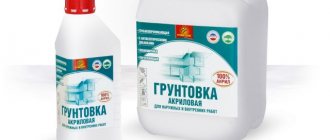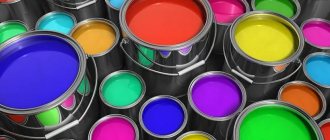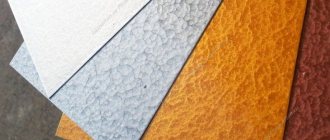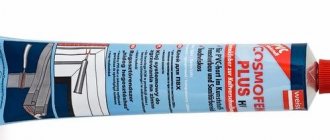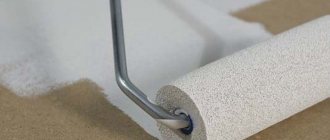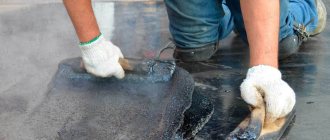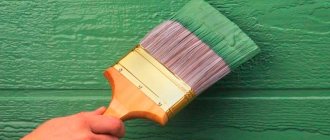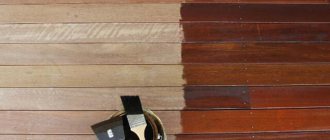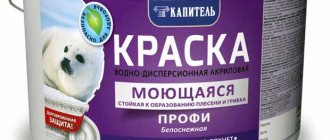At the moment, the use of oil paints is significantly reduced compared to past times. On the market of modern finishing materials, you can choose alkyd-based coatings, water-based solutions, as well as acrylic paints. However, there are cases when the use of such finishing materials is unacceptable. In such situations, paint marked MA-15 is used. It has a wide range of applications in various fields and fields. In the photo you can see what the original can looks like, as well as read the instructions and determine whether this type of paint material is suitable for a particular type of repair work.
Description and purpose of paint
Pigments and various additives are used to create a color palette. On the shelves of construction stores you will find the following colors:
- Beige;
- White;
- Yellow;
- Red;
- Brown;
- Blue;
- Blue;
- Birch;
- Black and others.
Attention! The color of the paint depends on the pigment included in the composition: ocher, white, mummy, chromium oxide, red lead and others.
The scope is wide. Used for external and internal work indoors. Cover wooden, metal, concrete surfaces. Paint walls and floors. Has the following properties:
- High resistance to temperature changes;
- Protects the painted surface from rust;
- Gives an aesthetic appearance;
- Forms a durable coating;
- Resists mold, fungi;
- Easy to apply;
- The service life of the surface is not limited.
After complete drying, the coating is harmless and can be used for decoration in a children's room. The material has a high level of adhesion to other means.
Surik MA-15
This paint material is also an oil mixture. It is used for application to pipes, roofs, and other metal products. This composition has anti-corrosion characteristics; after drying, it forms a film that is resistant to temperature changes in the range from -50 to +60 degrees. This material is excellent for sanding and has a high adhesion rate. Here are its main properties:
- shade – brown or red;
- consumption is 100-200 grams per square meter. meter;
- viscosity index - from 80 to 160 s, according to the VZ-4 device;
- the volume of dry residue is 14.5%;
- grinding index – 80 microns.
Specifications
The manufacturer indicates the technical characteristics on the packaging of the paint and varnish material. In the quality certificate or batch passport, you can also find detailed characteristics from the manufacturer. Let us draw your attention to the main ones:
- The surface to be painted must be flat, smooth, without defects;
- Complete drying time is 24 hours at a temperature of +20 C;
- The share of dry residue in the composition is 12%, the share of film-forming substances is 26%;
- Grinding degree – 90 microns;
- Viscosity according to the VZ-246 viscometer at a temperature of +20 degrees – 64–140 (depending on color);
- Covering power of the film – 45–210 g/sq.m. m (depending on color);
- Drying time for one layer is 24 hours at a temperature of +20 degrees;
- Film hardness according to TML – 0.05 cu; lightfastness of the coating – 2 hours;
- Resistance to water at room temperature – 0.5 hours.
Paint consumption per 1 layer
Paint consumption per 1 m2 depends on a number of reasons, such as the color of the paint, the method of painting, and how the material absorbs the paint. Material consumption is estimated at 55-240 g/sq.m of base. When painting metal, paint consumption will be less compared to wooden bases.
Indicators of the thickness of the paint and varnish material
Through measurements it was found that the thickness of one layer of MA-15 oil paint is about 30 microns. The two-layer coating is rated at 60 microns.
Surface drying
If the temperature is 20 degrees above zero, drying time is 1 day. However, under other temperature conditions, drying time may increase to several days.
If the surface is properly painted and dried, the paint will retain its properties throughout the year. You should understand painting in 2 layers and operation in temperatures from -45 to +60 degrees Celsius.
Before painting a metal surface, it should be primed using compounds such as PF, VL. and others. Metal bases are coated with two layers of MA-15 paint; for wooden bases, 1 to 2 layers are sufficient, with pre-treatment of the wood with drying oil.
Drying time
Complete drying time is 24 hours. Depending on the room temperature and humidity.
How to dry oil paint quickly
Drying oil paints are the record holder among paints and varnishes for drying. The drying process can be accelerated.
Popular advice: open the windows, create a draft. Use a hair dryer. Hot air will speed up the process. The air in the room heats up and the humidity level drops. The solvent evaporates faster. The paint is drying.
Other MA paint series
There are a large number of oil-based paints and varnishes on sale. One of the most prominent representatives of minium MA 15.
Red lead MA 15 is used for painting metal pipes, roofs and other iron products. The resulting coating is resistant to sudden temperature changes. Has good adhesion to the surface. Primary colors are red and red-brown. Consumption per square meter is 0.1-0.25 kg.
MA - 05 is produced strictly in accordance with GOST. The consistency resembles a paste. Before application it should be diluted with drying oil. The proportions are indicated in the instructions. Used for interior decoration only. Can be applied with a roller and brush. Primary colors green, blue, red. Drying time until “tack-free” is 24 hours.
MA-0115 is used for painting metal and wooden structures. Except for the floors. Dries within 24 hours at a room temperature of +20 degrees C.
MA-22 is used for exterior work and interior decoration. There are no primary colors. The palette is varied.
MA-25 covers wood and metal to protect it from the destructive effects of external factors. Withstands sudden temperature changes. The coating is moisture resistant. Dries overnight.
Application Features
Before the staining procedure, it is important to prepare the base well.
It is necessary to remove all dirt, dust, greasy stains, remove old paint, rust, and so on. If there are depressions, they need to be treated with a plaster mixture. To ensure a very good level of adhesion, it is better to apply a primer mixture to the base.
If the coating is made of new wood, then it must be treated with drying oil or a special primer mixture.
Painting can only be done if the base is completely dry.
To begin, the paintwork materials need to be mixed well. If the material is very viscous, then it needs to be diluted with a solvent (special purpose or turpentine).
Tools suitable include a roller, brush or spray.
The moisture level during the procedure should not be higher than 80%, and the temperature should be from 5 to 35 degrees Celsius.
After the work is completed, all tools must be treated with white spirit.
Consumption of dye per layer
How much paint will be spent per square meter will vary from the level of absorption of the base, how the mixture will be applied and with what, as well as the tone of the product.
This figure will be in the range of 55 – 240 grams per square meter.
For metal bases you will need less substance than for a wood surface.
Coating thickness
The thickness of one layer of such paint will be approximately 25 - 30 microns. Accordingly, two layers will be twice as thick.
Experts advise applying the paint in two layers, without taking into account the primer mixture. And if there is only one layer, then you still need to make a layer of primer.
The thickness of the coating will also vary slightly depending on the skill of the worker, the painting method and the level of viscosity of the paint.
Drying the base
Most often, a day is enough for the coating to dry if the temperature is about 20 degrees Celsius.
If the weather, temperature, humidity are different, then the surface can dry from 4 to 120 hours.
The declared properties of the paint appear only after 5 days.
Lifetime
If the preparation is carried out very carefully, the painting is also done correctly, and sufficient time is allowed for drying, then two layers of the product will last a year or more.
The coating will not change its original attractive appearance when used in standard weather conditions.
Use temperature -45 - +60°.
Painting methods
The metal surface must first be coated with a primer mixture (brand GF, PF, VL, FL).
If there is rust, then you need to coat the base with Unicor or take a rust converter.
Next, paint MA-15 in two layers. If the metal surface is rust-free, then two coats of paint without a primer are sufficient.
If the base is made of wood and covered with drying oil, then one or two layers of paint and varnish will suffice.
Removing paint from linoleum
Pay attention to the composition. If the composition contains drying oil, follow the instructions. Wet a rag in the solution and wipe the stain. Fill the rest with sunflower oil. After all, wipe the linoleum with soapy water. Another way. Soak a sponge or gauze in solvents (acetone, white spirit). Wipe the stain until it disappears completely.
Attention! Test the effects of the solvent on a small piece of linoleum. Some specimens may be seriously damaged by solvent exposure.
Oil paint finish
Is it necessary to clean the old enamel layer before repair work or not?
Primer for oil paint
Enamel makes the surface smooth and non-porous. This surface quality prevents high-quality adhesion of the new coating and the base. Whether or not to remove the old layer depends on its condition. If the entire area is in perfect condition, the layers will hold up well. It doesn't have to be cleaned. But if cracks and chips appear in places, you will have to get rid of them. Before applying the primer, clean the area from dust and dirt. After all the procedures, proceed to priming the walls.
Plaster over paint
You cannot plaster over paint. Clean the wall from the old layer in advance. There are five ways to get rid of old enamel on a wall. Remove everything carefully. After all manipulations, plaster is performed for the purpose of leveling.
Water-based emulsion for oil paint
You are going to update the color with water-based emulsion, but you don’t know what to do with the previous layer. A light-colored water-based dye will not cover a dark-colored oil base. Therefore, you need to either remove the layer of oil paint or choose a darker color of the water-based paint. Moreover, from a smooth surface you need to make it matte. Those. sand the paint with fine-grain sandpaper.
Is it possible to putty
First, examine the general condition of the wall. If chips appear in places. It's worth getting rid of them. All uneven surfaces should be filled with putty so that the wall becomes smooth. For better grip, it is better to make notches.
Is it possible to lay tiles over oil paint?
The unequivocal answer is no. The treated surface with an oil composition has a water-repellent effect. Tile adhesive will slide off a smooth surface. Before laying tiles, it is best to get rid of the old coating.
How to wallpaper
Without preparatory work, wallpapering will not work. As mentioned above, the walls are very smooth after coating. There is no need to completely remove the entire layer. Simply run sandpaper along the wall. To get a rough surface. After this procedure, the gloss will be replaced by a matte porous surface. In addition, all irregularities are leveled out. In some places it is necessary to apply putty. After completing all procedures, a primer is applied (primer + PVA glue in a 50/50 ratio).
